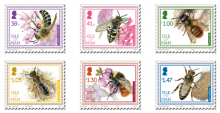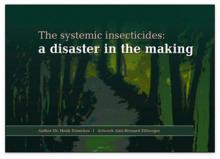Neonicotinoïden verhogen de vatbaarheid van insecten voor infectieziekten
Net als zoogdieren hebben ook insecten een aangeboren immuunsysteem dat in staat is veroorzakers van infecties te herkennen. Een team van Italiaanse onderzoekers, onder leiding van Francesco Pennachio van de Universiteit van Napels heeft nu ontdekt dat een bepaalde groep insecticiden – neonicotinoïden – veranderingen in het immuunsysteem van insecten veroorzaakt. Insecten zijn hierdoor extra kwetsbaar. Door het blokkeren van een regulator van het aangeboren immuunsysteem, NF-kB (een bepaald eiwit) kwamen onderzoekers erachter dat neonicotinoïden het immuunsysteem beïnvloeden. Dat is te lezen in het blad Proceedings of the National Academy of Sciences. De methode werd eerst op fruitvliegjes getest en daarna op bijen. Uit het onderzoek bleek dat bijen die geen neonicotinoïden kregen, bestand waren tegen een infectie. Bijen die wel werden blootgesteld, vertoonden wel reacties. Hoe groter de dosis neonicotinoïden, hoe groter de kans op infectie en hoe groter de kans dat het beestje dus sterft.










